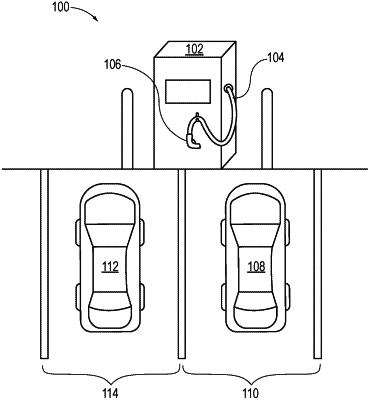| CPC B60L 53/65 (2019.02) [B60L 53/62 (2019.02); B60L 53/66 (2019.02); B60L 58/22 (2019.02); H02J 7/00034 (2020.01); H02J 7/00712 (2020.01)] | 20 Claims |

|
1. A method for policing charging behavior, comprising:
identifying, in a first iteration of an identification process, a first vehicle as a currently charging vehicle receiving a charge from a charging station during a current charging session, wherein the first vehicle is associated a first set of vehicle data including a first charging parameter describing one or more of a first location of the first vehicle, a first physical attribute of the first vehicle, and first charging data for charging of the first vehicle, and wherein the first charging data identifies at least one electrical property associated with the charge received by the first vehicle;
identifying, in a second iteration of the identification process, a second vehicle as the currently charging vehicle during the current charging session, wherein the second vehicle is associated a second set of vehicle data including a second charging parameter describing one or more of a second location of the second vehicle, a second physical attribute of the second vehicle, and second charging data for charging of the second vehicle, and wherein the second charging data identifies at least one electrical property associated with the charge received by the second vehicle;
determining a first difference between the first vehicle and the second vehicle by comparing the first charging parameter of the first vehicle to the second charging parameter of the second vehicle that corresponds to the first charging parameter to determine that the first vehicle is different than the second vehicle;
verifying the first difference by determining a second difference between the first vehicle and the second vehicle, wherein the second difference is different than the first difference; and
modifying the current charging session in response to verifying the first difference with the second difference.
|